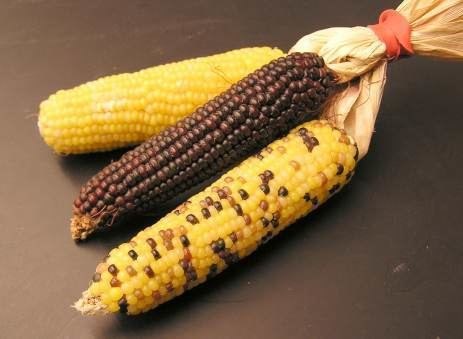 | ||
"Field corn" is a general term used in North America for corn varieties other than sweet corn, popcorn, yellow food grade corn used for yellow corn meal or flour and corn starch, and white food-grade corn used for white meal or flour and corn starch. Field corn is primarily grown for livestock feed and ethanol production when allowed to mature fully before being shelled off the cob before being stored in silos, pits, bins or grain "flats". Field corn can also be harvested as high-moisture corn, shelled off the cob and piled and packed like sileage for fermentation; or the entire plant may be chopped while still very high in moisture with the resulting silage either loaded and packed in plastic bags, piled and packed in pits, or blown into and stored in vertical silos.
Although not grown primarily for human consumption, people do pick ears of field corn when its sugar content has peaked and cook it on the cob or eat it raw. Ears of field corn picked and consumed in this manner are commonly called "roasting ears" due to the most commonly used method of cooking them.
Principal field corn varieties are:
Uses
Large-scale applications for field corn include:
Field corn is not generally regarded, in industrialized societies, as desirable for human food without commercial pre-processing. An exception is "roasting ears", similar in appearance to corn on the cob, although it is necessarily roasted (rather than boiled or steamed as is usual with sweet corn), and is neither tender nor sweet even after the roasting. Field corn is commonly eaten in third world countries, e.g. a variety of Field corn, known as Cuzco corn, is commonly eaten in the Andes region of South America.
